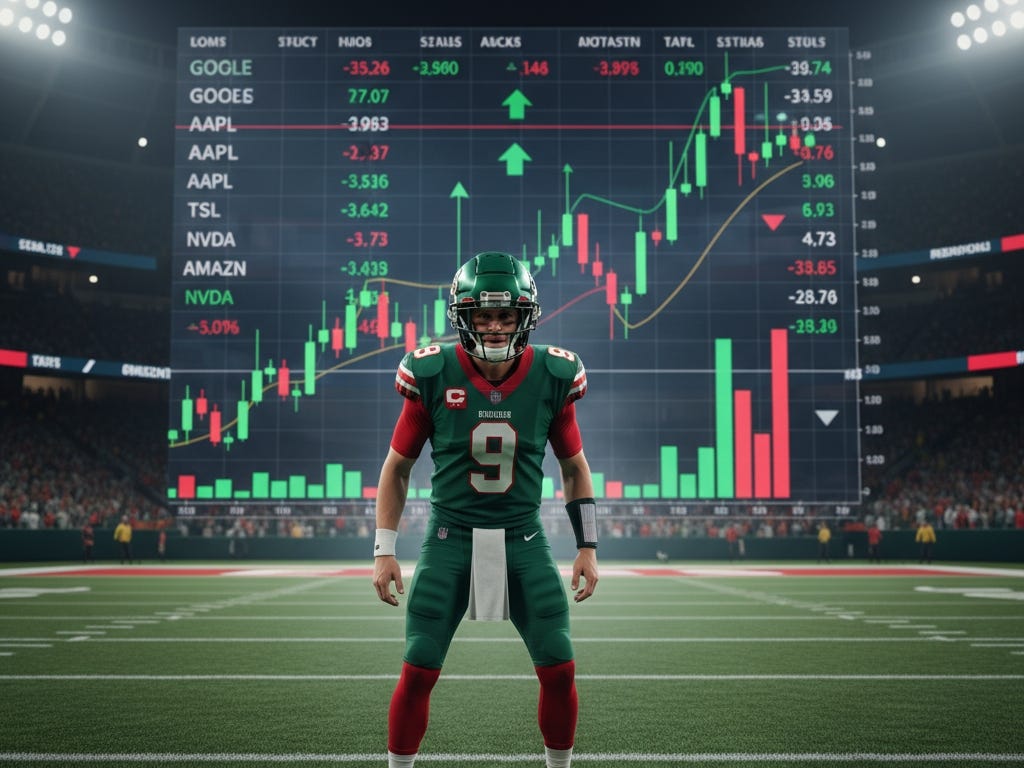Football and Investing
What can some football plays teach us about which investment should produce the best returns?
The NFL season starts tonight.
We thought this would be a good time to share a simple analogy between football plays and which investments you can expect to produce the best returns.
You may recall from our post Compounding: the 3 - 5 - 10 Rule that the three major investment asset classes are Stocks, Bonds, and Cash.
The long-term annualized return on Cash is around 3%, Bonds around 5%, and Stocks around 10%.
It would be nice if we could match the average yards per play to these return numbers, but it doesn’t quite work (the average yards per pass play in the NFL last year was just over 8 yards, and the long-term annualized return on Stocks is around 10%).
Still, we can use the relative order of average yards and returns to make a point.
Cash = Quarterback Sneak
A quarterback sneak is designed to gain enough yards in a short-yardage situation to make a first down and keep the drive going. It’s rare to lose yardage, and you don’t expect—or need—big gains.
In a similar fashion, Cash investments are designed to not lose money at the cost of having the lowest expected return.
Bonds = Running Plays
Regular running plays are designed to gain more yards, on average, than a quarterback sneak. Sometimes you can break off big plays, but it’s also possible to be tackled for a loss or fumble the ball.
Bonds, historically, have had higher returns than Cash and are generally used as the asset to help transition from your long-term portfolio (mostly Stocks) to your short-term portfolio (mostly Cash).
Stocks = Passing Plays
Stocks can be compared to passing plays. They have the highest average yards per play, but on a single play, they could have more negative results, like an incompletion, sack, or interception.
But you’re probably not going to win a game if passing plays aren’t a meaningful part of your game plan. Passing the ball gives you the best chance of winning.
In a similar fashion, Stocks give you the best chance of achieving your long-term investing goals. You just have to accept that every once in a while, things won’t go your way.
Summary
Again, this isn’t a perfect analogy, but we thought it was a fun way to put the relative return expectations of the major asset classes in perspective.
Best regards,
Stuart & Sharon


